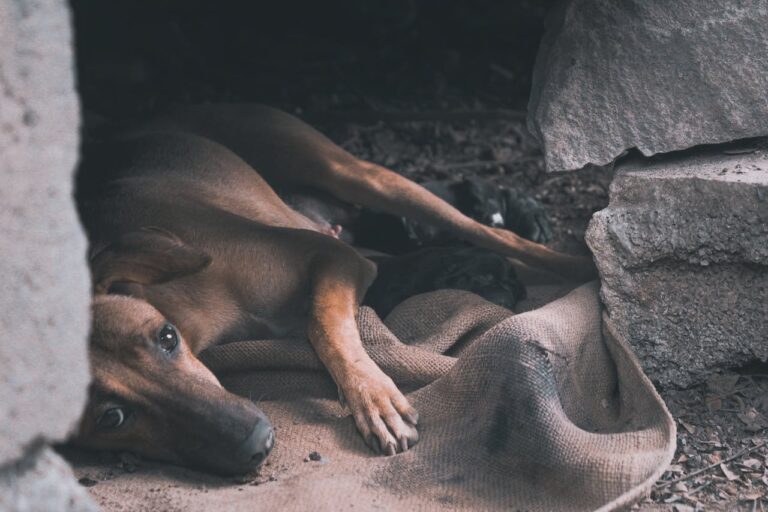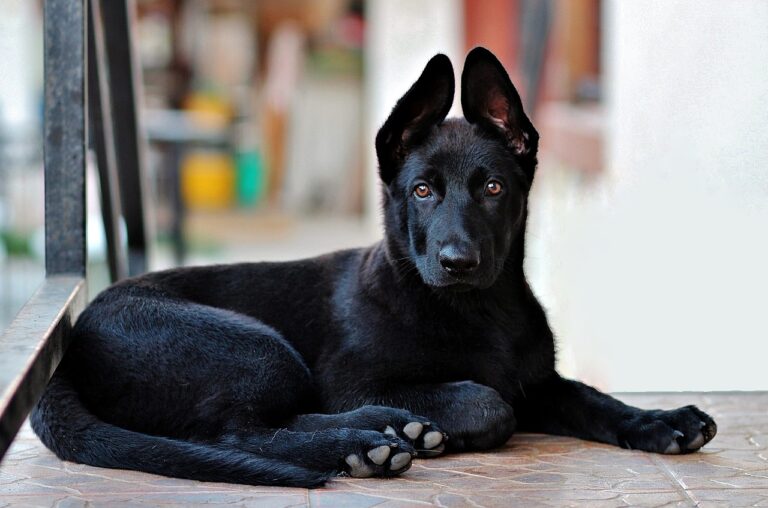
Our last post considered whether mixing a German Shepherd with a Belgian Malinois is okay. And we discovered that there is no danger in doing so. If you would like to read that article, click here. Today, though, we will consider all that is involved in caring for a Belgian German Shepherd Mix, from Puppy to adulthood. So, what is involved in this process?
The care of a Belgian German Shepherd Puppy will involve six major aspects.
- Feeding
- Healthcare
- Potty Training
- Socialization
- Exercise
- Obedience Training.
- Disciplining.
It is important to note that taking care of a Belgian Greman Shepherd Puppy Mix would require great effort. This post will touch on each of these topics to give you more insight into what is expected of you.
Feeding of a Belgian German Shepherd.
The feeding of a Belgian Greman Shepherd Mix is the same as feeding any other medium size dog breed. One dog’s appetite may differ from the other, but the fact remains that every dog food must contain the following ingredient;
- Meat
- Vegetables
- Grains
- Fruits,
It is not they have those food sublimates in their natural form. We see most dog food companies mixing all these ingredients and some other supplements into a dry food solution they claim is more effective for the dogs.
As a puppy, your Belgian German Shepherd would need to consume a lot of protein and Vitamins; this is why there are many puppy foods to choose from. Whatever dog food you decide to feed your dog, be sure it is of the highest quality and from a good brand.
Once you have gotten your dog food, the table below shows what type of food is recommended each Month, including the number of times You should feed your Puppy before reaching adulthood.
A Feeding Table ( Puppy to Adulthood)
|
Months |
Food Type |
Feeding Times |
|---|---|---|
| First Month. |
Milk and puppy food / Canned beef. |
Four times a day. ( small chunks of puppy food at a time ) |
| Second and Third Month. |
Canned Food and Puppy Dry food / Tasty treats at intervals |
Four times a day |
| Four to six months. |
Canned Food, Cooked Meat, Dry food, and fruits. |
Three times a day |
| Six to One year |
Dry Food, Canned Food, Cooked Chicken, and fruits. |
Two times a day |
| One year to two till infinity. |
One bowl of Dry Food, Canned Food, Fruits, and Meat. |
Once a day. |
Giving your growing Belgian German Shepherd all the food choices listed in the table above is optional. A wide variety of foods are listed so that You can substitute them for others. You should have at least two different types of food recommended on the table to ensure your dog gets the most out of your dog’s growth.
For example, you could substitute cooked meat or beef for Canned beef and a 20kg bag of dry food containing fruit supplements and protein content. Doing this would help cut expenses while ensuring your dog gets the best growth possible. Now we have got feeding out of the way, what about healthcare? Let’s find out.
Healthcare and Vaccination for Your Belgian German Shepherd.

Another major challenge when caring for a Belgian German Shepherd Mix is Vaccination. In our previous post, we listed various health problems the Belgian German Shepherd Mix is prone to having. Get your Belgian German Shepherd Mix as soon as your veterinarian is involved.
He will be able to run all the necessary checks on your dog while administering the first Vaccines your dog would be needed, including deworming and immune boosting. The Vet would also have a card opened for your dog, which you could use to track your dog’s overall health status and know what vaccines your dog needs to take.
But just for more clarity, the table below lists the basic vaccines you’re Belgian German Shepherd MIx would need to take to improve his overall health up to the time of death.
A Vaccine Table ( Puppy to Adulthood)
|
Dogs Age |
Name Of Vaccine |
|---|---|
|
1 to 2 Months |
Deworming and Multivitamin / immune booster. (you may do most drugs given at this stage orally) / Opening of Pet Card. |
|
2 to 4 Months |
DAP / Leptospirosis Lyme Canine Influencer |
|
4 to 6 months |
Rabbies / DAP/ Leptospirosis / Lyme / Canine Influencer. |
|
8 to 10 Months |
Rabbies / DAP/ Leptospirosis / Lyme / Canine Influencer. |
|
One year & Annually |
Rabbies / DAP / Bordetella. |
|
Three years |
Rabbies / DAP. |
A veterinarian should only administer all drugs and Vaccines listed here. Under no circumstance should you administer these Vaccines on your own? Also, your dog may still need to collect additional Vaccines not listed in this table due to some health issues it may encounter. The only guarantee here is that if you give your dogs all these Vaccines, they will most likely not encounter any severe health issues throughout their lifetime.
Potty Training a Belgian German Shepherd Puppy.
So far, we have considered more long-term care activities for raising a Belgian German Shepherd Mix. Fortunately, this next activity would not need to carry on throughout your dog’s lifetime. Sometimes the breeders of the dog handle these parts of upbringing independently.
But if, for some reason, you get a dog that is not Potty trained, here are a few steps you could take to get that done as soon as possible. Well, potty training is no easy task and begins as soon as your Belgian German Shepherd mix. If you live in an apartment where your dog would need to be inside, most of the time, you would need your dog to be trained.
Potty training means teaching your dog not to do his business in the house. The secret to doing this successfully is knowing that dogs do not like to do business in a place they consider their home. So if you can teach your dog to understand that he is not to potty in the house, you must teach him to see your house as his, not just a part of the house.
The best approach to potty training is to create training and stick to a consistent feeding time. You also need to ensure that you can monitor your dog’s potty habits at the early stages. The full…
- Crate train your dog using positive reinforcement.
- Maintain a good feeding schedule.
- Take your Puppy out to potty immediately after meals and naps.
- Reward your Puppy anytime it potties outside.
- Be patient and never get frustrated and yell or hit your dog or Puppy.
If you follow the information in this section, you will surely succeed in potty training your Puppy on your first attempt.
Exercise and Socialization for a Belgian German Shepherd.
Exercise and Socialization are two very important factors for any German Shepherd Mix. The Belgian German Shepherd Mix needs it the most because it mixes two high-quality dog breeds. They are also very Aggressive and easily get frustrated. All these are bad traits to have in a dog that is considered a family pet and protector. But what is involved in both exercise and Socialization of this mixed breed? Let’s find out.
Exercising a Belgian German Shepherd.

Exercising a Belgian Greman Shepherd Mix is as important as exercising a Greman Shepherd or Belgian Malinois and should not be taken likely. If you are the type that leaves for work early in the morning and comes home late in the night, you would need to make sure you wake up early enough.
This is so that you can walk your dog long distances and jug with him. You would also need to create a space where your dog could stay and be free to walk about.
Doing this would ensure your dog does not get unnecessarily anxious about you leaving. It is also recommended you either get someone to come over and take your dog out or make time to do this yourself.
Always ensure there is something to help keep your dog distracted while you are away, probably a toy. Doing this would ensure your dog does not get bored and become destructive; you could get a toy to play with or blend and freeze up a tasty and reach treat they could play with when you are away.
Socialization of a Belgian German Shepherd.
Like potty training, the Socialization of a Belgian Greman Shepherd Mix or any other Dog breed should begin as soon as the dog enters your home. You start by making sure the dog knows every member of your family. You can do this by introducing your Puppy to each family member and giving them time to interact with the Puppy properly. And as for socializing with other people and dogs, you could take your Puppy to a dog park where he gets to see and mingle with other dogs while seeing various people.
Will Socialization Reuben your dog’s protection qualities? The answer is a big no! Socialization makes your dog more successful in protection and guardian work. This is because your dog becomes familiar with seeing different types of people and dogs. This makes your dog less likely to suffer from social anxiety, which German Shepherds are sometimes plagued with.
The point is to get your Belgian German Shepherd Mix socialized as soon as possible to help improve its overall behavior.
Obedience Training and Disciplining of a Belgian German Shepherd.
For any dog breed to survive in a family setting, You must properly train it. This means having basic obedience training. Positive reinforcement training is the best form chosen and loved by most dog trainers. This means using treats and high-value rewards to encourage positive behaviors in your dog. This is the best and easiest form of training any beginner could use to instill good behavior in your dogs. But what are some things your dog needs to know to at least live in peace with you? Well, your dog needs to learn how to…
- Sit
- Stay
- Crate trained
- Potty trained
- Stay quiet
- Bark
- Protection training ( recommended but not necessary)
You might want your dog to have many qualities only you could know. But the fact remains that you would have built a great protection dog if your Belgian Greman Shepherd Mix knew these few commands and was both potty and crate trained. But what if your dog behaves in a way you do not like? How do you correct bad behavior? Let’s find out.
How to Correct Your Belgian German Shepherd.
Correcting any dog breed’s bad behavior is a very controversial topic. This is why almost every dog trainer avoids talking about it. Some of the methods of correction recommended by many dog trainers have been seen to be on the extreme side, regardless of how nice they try to paint it. But what is the best form of correction?
Well, the best form of correction is prevention. This means that if you discover that your Puppy or dog loves chewing on your shoes and slippers anytime it is released, it would be best to remove any shoes and slippers and keep them out of your dog’s reach when it is released. This method, though, may seem stressful to you. If that’s how you feel, then try this instead.
You could take time to list all the bad behavior you have noticed in your dog. List them in categories of those you could live with and those you couldn’t bare. Once you couldn’t bear, like maybe your dog chewing up your couch, you could work on fixing these problems.
Before you can effectively control your dog’s bad behavior, you would need to catch him in the act. Sometimes this may require setting up your dog. As soon as you catch your dog in the act, pick a firm and loud word like No, or Stop.
So, if you catch your dog chewing up your couch, you would immediately say a loud NO! And pull your dog away from the scene.
Every time you catch your dog doing something you do not like, use the same command in the same pitch while immediately stopping your dog from the act. Correcting your dog is the most difficult part of its upbringing, but if it is done right, you will have a balanced, obedient, and well-behaved puppy.



